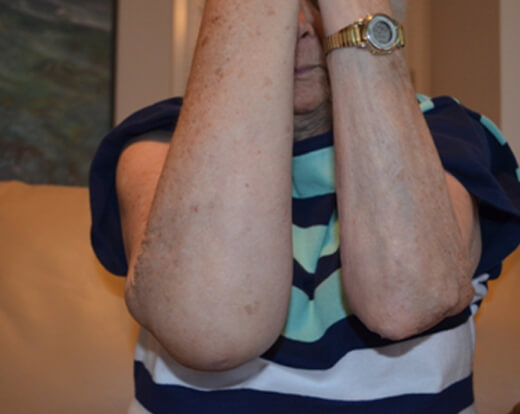Lymphedema, like any other health disorder, arrives without issuing a warning. It shows up quietly, as a swollen arm, a heavy leg, or a sleeve that used to fit.
At first, you brush it off as water weight or a weird reaction to something. Then it doesn’t go away, and suddenly, you’re living with something you understand so little or nothing about.
The condition is called lymphedema. It’s misunderstood, underestimated, and, far too often, ignored until it becomes impossible to miss.
Nonetheless, your body hasn’t betrayed you. It just needs a new kind of support, one that’s precise, gentle, and oddly powerful.
This guide will break down the sophisticated medical jargon surrounding lymphedema and help you understand the real power of physical therapy lymphatic massage.
What Is Lymphedema in Simple Layman’s Language?
Let’s skip the jargon and say it straight. Your lymphatic system is your body’s silent sanitation crew. It moves fluid, waste, and immune cells through vessels thinner than a strand of hair. Until it doesn’t.
When lymph fluids can’t move, because of surgery, radiation, trauma, or a congenital issue, it pools. The tissues swell, skin stretches, and limbs feel heavy, stiff, and sore. That’s referred to as lymphedema.
Lymphedema massage physical therapy is not pampering or a spa day. It is therapy done with the sole purpose of getting the flow going again.
Physical Therapy Lymphatic Massage
Also termed as manual lymphatic drainage (MLD), physical therapy lymph massage is more like choreography than muscle work. It’s light, deliberate, and follows the natural pathways your lymph takes.
Imagine a therapist guiding invisible rivers beneath your skin, helping them find their way back to open water. That’s what’s happening.
But when it’s done by someone trained in physical therapy, it is no longer a massage or a standalone treatment. Instead, it is part of a strategy, one with compression wraps, personalised movement plans, skin care, and the kind of tracking you’d expect from elite-level coaching.
The Unspoken Power of Therapy
Yes, physical therapy lymphatic massage reduce swelling. It prevents fluid buildup and infections. But its impact? That hits somewhere deeper.
It gives people back parts of themselves they thought were gone, such as:
- The joy of wearing clothes that fit again
- The freedom to move without stiffness or strain
- The confidence to show their body without explaining it
Who Actually Needs This?
If you’ve had lymph nodes removed, cancer treatment involving radiation, or your body is holding fluid in one limb that just won’t budge, lymphedema massage physical therapy is your new lifeline.
It’s also ideal for post-surgical healing, especially for procedures like liposuction, facelifts, or tummy tucks. Surgeons in the know will tell you that recovery isn’t just about rest but about flow. That’s exactly what MLD treatment restores.
So, whether you’re managing chronic lymphedema or trying to get back on your feet post-op, MLD therapy helps change the recovery game by tipping the odds in your favour.
What Actually Happens in a Session?

Your first appointment isn’t awkward or clinical. You’ll meet with a therapist who actually knows lymph inside out. They’ll assess your body, measure swelling, and explain what’s happening in plain terms.
Then they’ll begin the massage. It’s not painful. Not even close. It’s quiet, slow, and intentional. Some people fall asleep, and others feel oddly emotional because, for the first time in weeks, their bodies feel like they are being understood.
You’ll probably leave with compression wraps, instructions for care at home, or maybe even a custom garment. There’s no one-size-fits-all here; it is tailored therapy.
What You Gain Apart from Relief
Let’s list the real benefits of lymphedema massage physical therapy below.
- A lighter body (literally, in fluid weight)
- Improved mobility (no more stiffness every morning)
- Clothing that fits (you’ll notice it in your sleeves, pant legs, and even shoes)
- Fewer infections (because lymph stagnation is a breeding ground)
- A sense of control (when so much else feels out of your hands)
Why Certification Matters and Why You Should Care
Not every therapist is qualified to perform physical therapy lymphatic massage. You want someone who’s been trained specifically in lymphedema management, preferably a Certified Lymphedema Therapist (CLT).
They don’t just do the massage but also teach you how to live with it, how to manage your body without fear, and how to spot changes early and respond with confidence. You deserve a therapist who treats your lymph flow like it matters, because it does.
Is This a One-Time Thing?
Not exactly. Lymphedema massage physical therapy work best when they are part of a plan. Some people need a few sessions post-op, while others incorporate it as part of lifelong management.
It’s not about dependency but about rhythm. You’ll learn how often your body needs support. You’ll also learn self-massage techniques. Over time, you become your own best therapist, with backup.
Conclusion
We talk a lot about “going with the flow,” but when your lymphatic system stalls, that phrase takes on new weight. Flow becomes a goal, a need, and a sign of life moving again. With physical therapy lymphatic massage, you aren’t just reducing swelling but reclaiming balance. You’re reestablishing communication with your body. If you’ve been living in silence, feeling swollen, stuck, or stiff, lymphatic physical therapy can turn the volume back up by flowing.

